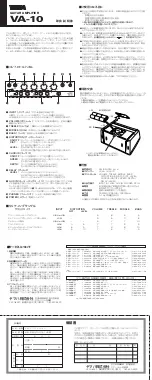
TECHNICAL NOTE – OPERATION OF MT4000 TWTA
10/24/03
TN4000-3
MCL, INC.
43 of 46
4.
Ground strap (earth) attached to safety ground stud on rear panel of MT4000.
5.
Appropriate AC input voltage and frequency has been connected to the MT4000. Check
AC system voltages by measuring the voltage on the mate for J1 (AC input connector).
6.
All waveguide flanges are securely fastened together and input RF coaxial cable is firmly
attached.
7.
All electrical connections double-checked mechanically and electrically. The main AC
power connector should be properly connected to J1 on the MT4000.
8.
Air intake and exhaust properly installed. Make certain that the installation does not
allow air to recirculate between the input and output.
9.
The input RF drive source (exciter) should be properly connected with its output set to
minimum and off (mute).
10.
If the User Interface (J6) and Switchover Interface (J7) are not used, the supplied cheater
plugs should be installed on the rear panel.
11.
Connect the Remote Panel & Computer Interface cables to the rear panel.
5.2
Operating Caution List
The table below is a list of improper operating conditions. These are conditions, which could
damage the TWT amplifier system and must be avoided. Also listed are the probable sources of
each condition.
SYMPTOM
ORIGIN
High or Low System AC Input Power
a.
Customer Power Source
b.
Continuous system operation with circuit breakers
bypassed (“cheated”).
Excessive Tube Drive Power
Overdrive on RF System Input or TWTA Gain Adjustment
Set Incorrectly
Tube or PS Temperature fault/alarms
System operation with blocked air intake and/or exhaust
ports.
Tube Temperature
System operation outside the specified environmental
range.
Excessive Output Reflected Power
Meter Indication
a.
System Output Transmission Line Connection and
Customer Waveguide/Load Incompatibility.
b.
Operating TWTA with unterminated RF input or
output ports.





































